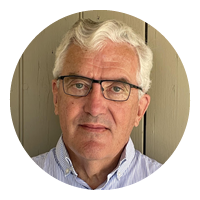Rod Jones
University of Cambridge
- Conference: Air Quality Conference
- Presentation: Sensor Network Operation and Data Expoitation
- Presentation Time: Day2 10:20


Prof Roderic L. Jones is Professor of Atmospheric Science at the Yusuf Hamied Department of Chemistry, University of Cambridge. He has over 30 years research experience in the structure and composition of the atmosphere, focusing on a wide range of issues from local air quality to global climate change.
RLJ and his research group have pioneered the use of low cost sensors and sensor networks for air quality measurements. He has participated in and led numerous national and international projects using low-cost sensor methods for urban monitoring of air quality and personal exposure and health studies.
RLJ has published over 200 papers in the peer reviewed literature on these subjects.
Air quality measurements are traditionally recorded as hourly averages, consistent with the framing of air quality guidelines as concentrations averaged over hourly intervals or longer. This approach is sufficiently embedded that, for example with the AURN reference network UK, although intrinsic measurement making up time averages have high resolution (~ 1 min), once appropriate averages have been derived the fast response data is discarded and not even archived for future studies.
As part of the Breathe London Pilot project (https://breathelondonpilot.org) and other developments, we have deployed networks of lower cost air quality instruments over extended periods. Intrinsic to those projects has been the direct exploitation of fast response (1 min or less) measurements at all sites. This has allowed both network calibration and quality assurance, but has also been used to separate the scales of pollutant emissions – distinguishing those emitted locally from those advected on regional scales – a matter of clear policy interest.
As part of the NERC/UKRI QUANT project and associated with the COP 26 activities, we have been able to adapt 15 sites from the AURN/SAQN reference network across Glasgow to archive gas and PM measurements at 1 minute intervals from mid 2021 for ~ 12 months. In this paper we will present early results from this study, including, for the first time, examples of scale separation from reference air quality network.